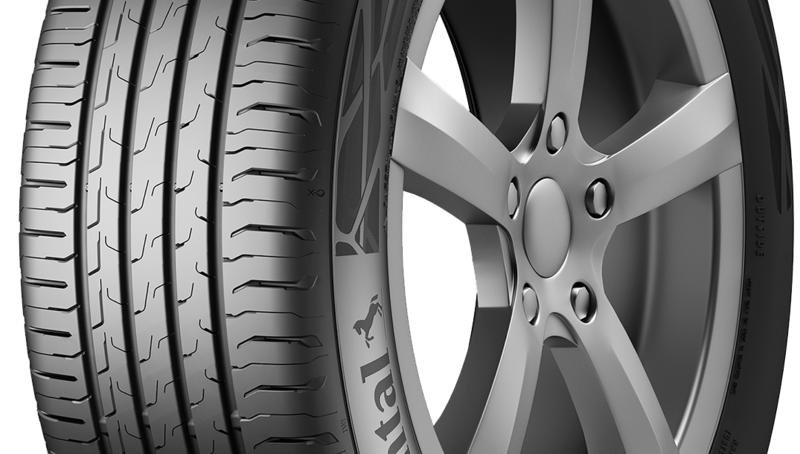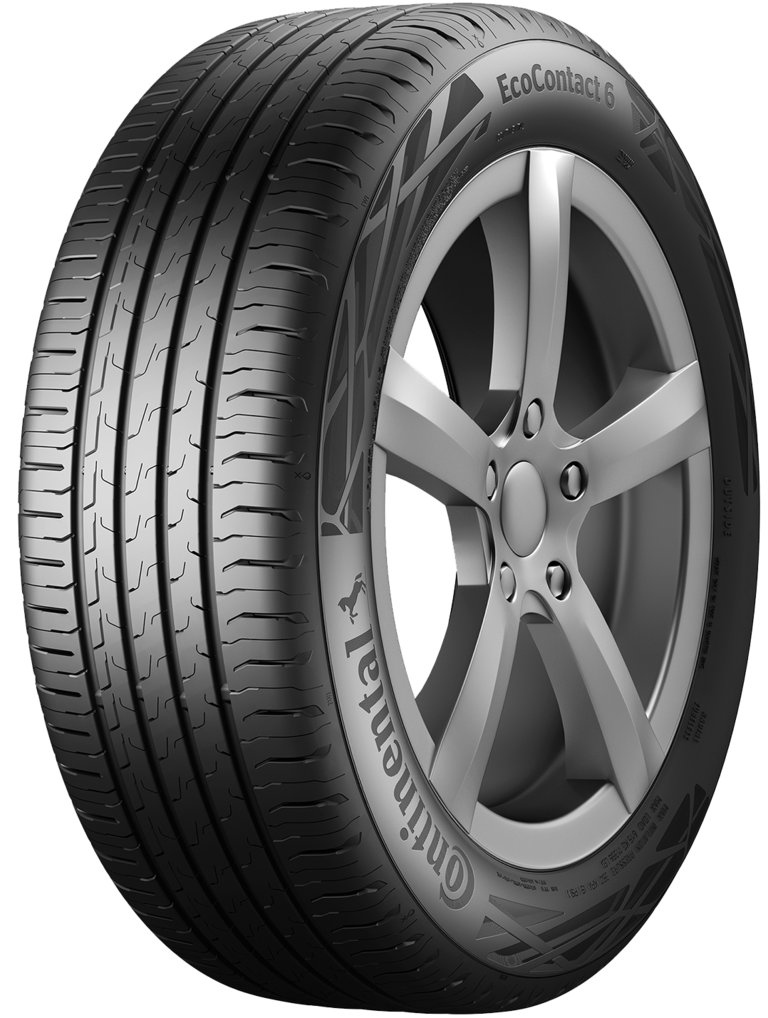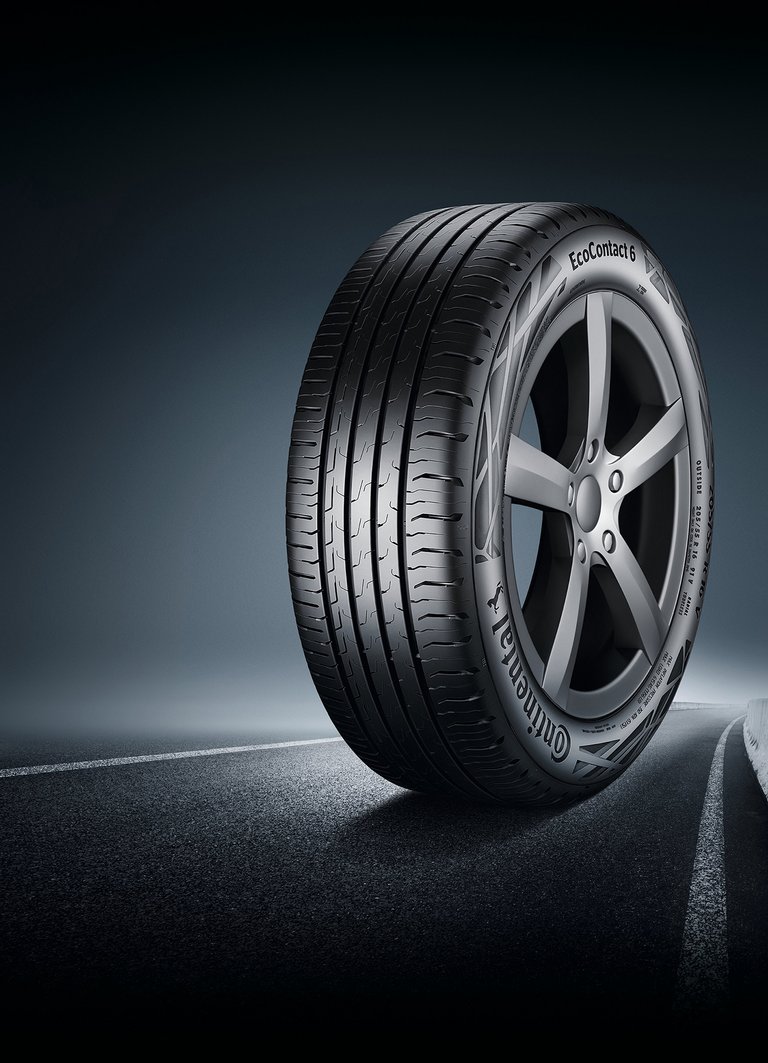Continental Tires with Particularly Low Rolling Resistance Set New Standards in the Original Equipment Business
- Reduction of rolling resistance of a tire designed for Ford by more than 15 percent beyond “Class A” EU Tire Label requirements, without compromises on safety or comfort
- EcoContact 6 summer tires help to increase the range of electric vehicles and lower CO2 emissions for vehicles with combustion engines
- Ford has already granted original equipment approval for five hybrid and combustion-engine models
Hanover, Germany, August 12, 2021. Continental’s tire development engineers have accomplished yet another innovative feat: The rolling resistance properties of a EcoContact 6 summer tire designed for Ford have been further improved and now surpass those required for the EU Tire Label’s “Class A” highest ranking by more than 15 percent. Reduced rolling resistance has a significantly positive environmental impact thanks to lower energy consumption. In the case of electric vehicles, maximum range can be increased by as much as 3 to 4 percent as a result. For vehicles with combustion engines, Continental’s calculations – which major carmakers have confirmed – show that a 15 percent reduction in rolling resistance (under otherwise identical conditions) can yield fuel savings of roughly 0.1 liters per 100 kilometers. This, in turn, means a reduction in CO2 emissions of about 2 grams per kilometer.
Extraordinary improvement in rolling resistance
The substantial reduction in rolling resistance achieved for EcoContact 6 tires was made possible by a variety of design measures such as a reduction in the materials used. Also, innovative technologies have been implemented, for example an optimized rubber compound designed to lower abrasion and particularly heat build-up as a major cause of rolling resistance. “In connection with an original equipment order placed by Ford, we have succeeded in improving rolling resistance properties to an extraordinary degree,” remarked Dr. Holger Lange, Head of Passenger Tire Development for Continental’s original equipment business, adding: “This is all the more remarkable because we managed to achieve this without compromising on tire safety or comfort."
Engineering feat achieved despite the conflict of objectives between low rolling resistance and high braking safety
The challenge faced by the development team was not only to significantly lower rolling resistance, but also to meet the customer’s requirements in terms of long mileage and short braking distances – objectives of intrinsically conflicting nature. While the aim of reducing rolling resistance is to keep energy loss as low as possible, the opposite is true for braking: To keep braking distance to a minimum, tires need to dissipate as much energy as possible. This is rarely a problem on dry roads, but it is when roads are wet. The water on the road then acts like a lubricant, lowering traction and resulting in longer braking distances. The tire development engineers therefore needed to take a holistic approach throughout, paying close attention to the interplay of each and every performance factor so as to ultimately achieve across-the-board improvements.
“Thanks to their special properties, the tires we developed are helping Ford to sustainably reduce vehicle energy consumption across all drive types and models,” remarked Lange, adding: “In so doing, our EcoContact 6 tires for Ford are setting a new rolling-resistance benchmark for the entire industry. In this way, we are making an important contribution to helping our OE customers achieve their WLTP fleet targets.” WLTP stands for Worldwide Harmonized Light-Duty Vehicles Test Procedure – the standard test procedure for passenger car tires worldwide.
For five Ford models, Continental already received original equipment approvals for its particularly rolling resistance-optimized tires based on the EcoContact 6. Two of the models concerned are partially electric – namely the Puma Mild Hybrid and the Kuga Plugin Hybrid – while the others are equipped with internal combustion engines, namely the Ford Fiesta, Focus and Focus Active models.
Many years of experience in the development of tires for electric vehicles
“Continental has been working on tires to increase the efficiency of electric vehicles for over 10 years, now,” said Lange, adding: “As early as 2012, we presented the Conti.eContact – a tire specifically designed to meet the needs of solely electrically powered vehicles. In the meantime, almost our entire portfolio meets e-vehicle requirements, while at the same time also being capable of sustainably reducing emissions for combustion-engine vehicles.”
In the market for tires meeting the requirements of fully electric vehicles, Continental’s market share continues to grow. In 2020, 6 out of 10 of the world’s highest-volume makers of electric vehicles placed their trust in Continental’s advanced engineering and chose Continental tires as original equipment, e.g. Tesla for its Model 3 and Model S as well as Volkswagen for the ID.3.
Approved models and tire sizes:
Fiesta
195/60 R15 88V XL EC6
195/55 R16 91V XL EC6
205/45 R17 88V XL EC6
Focus
215/50 R17 95V XL EC6
Focus Active
215/55 R17 98V XL EC6
215/50 R18 96V XL EC6
Puma Mild Hybrid
215/50 R18 96V XL EC6
Kuga Plugin Hybrid
225/60 R18 104V XL EC6

Henry Schniewind
Head of Global External Communications
Continental Tires



